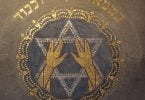Embarking on a new book about India must be daunting as so much has been written about this vast mosaic of a country; its teeming population; rich, vibrant history; and diversity of religions and culture. It must have been even more of a challenge for Sam Miller, a former BBC correspondent and later senior manager at the corporation based in Delhi, who had to contend with the towering reputation of one of his predecessors, a man who will always be associated with the BBC in India – Sir Mark Tully.
Undeterred, Sam Miller has decided to present India, his current home, as perceived by foreigners who visited the country thousands of years ago stretching to those who flock to the country today. His fierce determination not to be seen as carrying any colonialist baggage shines through the book.
Miller is a former BBC colleague which is why his experience is of particular interest. Miller married a Parsi woman, has two children, and has lived in India for a large chunk of his professional life. His stint as the BBC’s correspondent in Delhi gave him an inside view of dramatic events that shaped the country and instant access to people at all levels of society from government leaders to street-cleaners. This helped him to gain valuable insights into what makes the country tick.
Miller interweaves his personal story with a romp through 2,500 years of Indian history as seen through the eyes of travelers like Ibn Battuta, the Chinese, ancient Greeks, Mughals, Dutch, Portuguese, and, of course, British colonizers. He recounts how his interest in India was sparked when he was a schoolboy by a cult Japanese TV series, Monkey. It tells the story of Tripitaka, a Buddhist monk who “would defeat demons and other malefactors as they made their slow way from China to India in their quest for ancient Buddhist texts, like a less po-faced, martial arts version of The Lord of the Rings.”
Miller does not hide his impatience with the standard trite and simplistic opinions on India spouted by backpackers, romanticists, and a gamut of other foreign visitors who arrive with preconceived notions. “It is a place onto which foreigners have projected their own exotic fantasies and fears, their explanatory and simplifying schemata. And they seem to never make up their minds – as they swing from one extreme to the other – whether this country is actually a land of great wealth or of appalling poverty, of spiritual renunciation or of unabashed materialism, of fasting or of gluttony, of erotic sophistication or of sexual puritanism, of corruption or of moral superiority. They probably fail to admit that it might be all these things, and, even more so, everything in between.”
And India has had its detractors and fantasists across the centuries. “The earliest surviving descriptions of India by foreigners, all Greeks, from more than two-thousand years ago, were of a fantasy land at the edge of the known world; a land of mystery and miracles, and some distinctly unusual behavior. There were tales of killer ants that dig for gold, of humans with giant ear lobes that could be used as sleeping bags, a land where it would be unthinkable not to eat one’s recently-deceased parents, and where fountains spouted molten gold.”
Miller set out to explore parts of India that tourists do not see. He takes the reader to obscure, overgrown, forgotten, and neglected corners which have a historical connection with the past. He introduces readers to quirky individuals he comes across on his solitary journeys, holy men, old women, eccentric tourists each with their own stories made up or real. He shares what he has learned about the relationship between chicken’s milk and Indian mushrooms, the curative powers of cows’ urine, nineteenth century western views of female sexuality, is rude about the Taj Mahal, and tells us about a bizarre encounter with a fortune-teller.
Miller belongs to a long line of British writers and other professionals who have succumbed to the spell of India and elected to make it their permanent base. He has written two other books also about his adopted country – Delhi: Adventures in a Megacity and Blue Guide: India. There are some Indians who see Indophiles like Miller as embodying a nostalgia for the days of the Raj. Miller’s book is a vehement rebuttal of any such perception. Whether you are unfamiliar with India or believe you know the country well, Miller is the ideal companion to introduce you to new experiences, people, and places in this sprawling, complex, and endlessly-fascinating country.






















